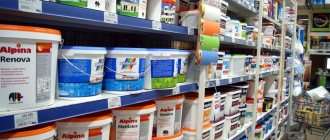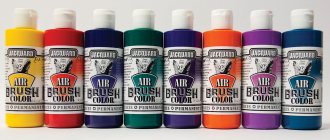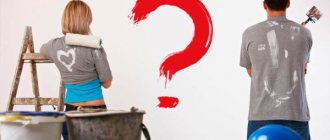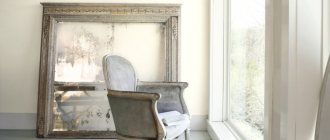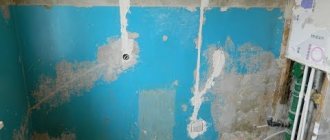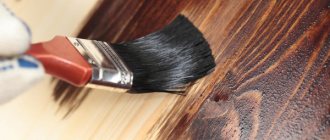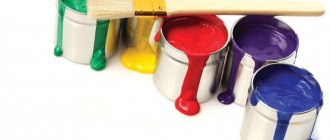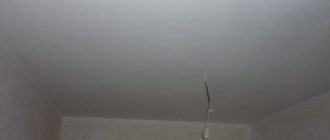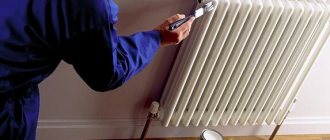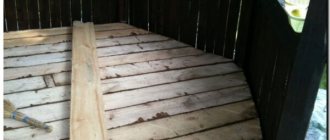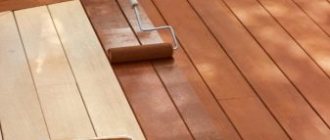Reads: 4,927
Reading time: 12 min.
no comments
Body painting masters use special paints and other materials for body art that look impressive and at the same time do not harm the skin.
Another important aspect when choosing a dye is the relative durability of the designs.
Of course, patterns made with henna last longer, but high-quality makeup from well-established manufacturers does not wash off for long enough.
For body painting
What kind of paints can be used to paint on the body to create works in such a direction of body art as body painting? Craftsmen use homogeneous suspensions of pigments in film-forming substances to paint the face and body.
Pigment (from the Latin pigmentum) in fine art technology is a colored powder, an essential component of any paint as an artistic material, which determines the color tone of each paint.
The pigment determines the color qualities of the paint, and its technical properties depend on the binder.
For example, in paints used in body painting, the binder is water or wax, and the pigment is subject to strict health and sanitary requirements.
In ancient times, when making ritual paints for body painting, pigments extracted from plants or mineral clays and mixed with animal fat or vegetable oil were used.
Ocher, kaolin and similar natural dyes have long been distributed throughout Asia, Africa and Europe. Henna, used as a temporary skin dye, has always been widely sold in the Muslim world.
Nowadays, factory-made paints are often used for body painting, making them more accessible for body decoration and having a wide palette of colors.
For example, face and body paint from Snazaroo (UK) is packaged in 18 ml cans and has the following colors:
- Apricot
- Orange
- Brown
- Dark grey
- Pale yellow
- Herbal green
- Yellow ocher
- Pale green
- Purple
- Peach
- Pale pink
- Light beige
- Burgundian
- Light brown
- Green lemon
- Light gray
- Beige-brown
- Dark green
- Pale blue
- Turquoise
- Royal blue
- Fuchsia
- Rust
- Hot pink
At the same time, there are a lot of professional paints for body painting, specially developed by cosmetic companies for these purposes.
Such dyes are harmless to the skin of models, they are not only hypoallergenic, but also adhere well to the skin, do not crack on the bends of the arms and legs, do not flow under spotlights and are easily washed off with warm water and soap and (or) special cleansers, and are also different by density, texture, transparency, packaging shape, etc.
There are also paints for use with a brush and for use in airbrushes.
Combinations of paints with colored clay, overlays, natural materials and modern derivatives are possible; there are paints for graphic and pictorial techniques.
There are two main types of materials (professional cosmetic dyes) that are used for makeup, body and face art:
- On a fatty basis (supra, theatrical makeup, supra color, fards gras)
- Water-based (face painting, aqua color, liquid make up, aquarelle, watercolor).
In addition to them, fluorescent paints, bases (foundations), henna, special self-tanning lotions, pencils for body painting, felt-tip pens (markers), etc. are used in body painting.
Anyone who has at least a minimal understanding of working with tempera, oil or pencil can easily master the art of body painting.
The only difference is in the “surface”, which in this case will not be a sheet of paper or a canvas, but the human body.
It is important that when using these paints for drawings on the body, there is no harm to human health, therefore, appropriate hypoallergenic materials are used in body painting.
It is also necessary to have certain knowledge about human skin and strictly follow hygiene standards.
It should be borne in mind that the skin “lives” and has the appearance of a mesh consisting of fairly wide cells (pores), which allow liquids to evaporate and, therefore, any type of substance to penetrate inside, so paints should be of vegetable rather than synthetic origin.
It is not recommended to use tempera and acrylic paints, which are intended for ordinary painting, as well as the use of oil paints and synthetic enamels used for airbrushing on cars.
There are ready-made paint palettes with the necessary colors in one box.
A palette for children's body art is also produced, which is very popular in kindergartens.
It is characterized by the use of absolutely non-toxic products and, as a rule, low coloring intensity of pigments compared to professional paints.
There are artists who use glow-in-the-dark fluorescent paints that are resistant to either water or soap, and can only be removed with a special solvent.
There is a known case of using paints, the main chemical component of which is hydrolyzed silk, which made it possible to imitate women's stockings when applied to the legs.
They were invented by Japanese entrepreneur Yoshiumi Hamada, who decided to alleviate the plight of his female colleagues, who were forced to steam, according to the company dress code, in stockings and tights in 30-degree heat and 80% humidity.
Painted stockings, which are aerosol paint for the legs in the form of a thin silky film covering the skin, visually look like ordinary nylon stockings.
These stockings perfectly imitate real ones and do not interfere with the skin’s ability to breathe.
The principle of putting on air stockings is simple: you need to shake the aerosol can, spray it on your legs and rub it over the skin.
There is also a new type of body decoration product made from finely ground powders with shiny flecks that remain on the surface of the skin.
They serve to give images three-dimensionality and are superimposed on a fresh painterly surface. The powder sticks better if the paint has not yet dried.
Special paints for body painting are sold in professional stores for artists; theatrical makeup can be purchased in theater stores and cosmetics departments.
Let's take a closer look at some types of body painting paints.
Oily makeup
In body painting, oil-based makeup (supra) is often used to work in the brush-and-sponge technique.
Supra applies smoothly, is easy to shade and has rich color and shine.
Metallic colors, for example, are conveyed much brighter and more richly by heavy makeup.
However, even after fixing, it does not dry completely and smudges when touched.
Therefore, supra can be used, for example, on the face or for accents on the body, or if an artist is painting a model for photography.
Be sure to fix oily textures with powders (eye shadows, mica, etc.) and/or a special fixative.
Products made with oil-based makeup are more elastic and shiny.
It is especially recommended to use it when working with metallic shades, they enhance the effect.
In addition, this makeup is durable and elastic, which allows the model in this “garb” to move and dance freely.
Almost its only drawback is that it cannot be washed off with water.
To do this, you will need special oil-based makeup removers, which are best purchased together with dyes.
The makeup is quite easy to use. It is applied to the skin with a sponge or fingers.
By themselves, these paints do not mix with each other, and if you try to do this, you will get stains, which, by the way, can give a very good effect.
The dye lies evenly, it must be fixed on the skin, for which a transparent, narrowing powder is used, which is applied with a puff.
Due to the composition and selected components, oil-based makeup also includes professional theatrical facial makeup.
The composition of the makeup includes vaseline oil, ceserine, petroleum jelly, paraffin, titanium white, beeswax, lanolin, dyes, pigments, fragrance.
Theatrical makeup does not interfere with the skin's breathing and does not clog pores; it is easy to apply, holds firmly and is easy to remove.
What kind of drawings can you draw?
Thanks to the properties of Face Painting, it is technically possible to create any image. Judge for yourself:
- suitable for both children and adults
- a wide range of colors allows drawing for both girls and boys
- colors can be easily mixed to create new shades
- You can use both brushes and sponges to create drawings
- does not cause discomfort when drying
- you can make both broad strokes and the finest patterns and lines
Fluorescent paints
Fluorescent paint emits a bright signal color when exposed to light.
The glow effect of fluorescent paints has been known since ancient times. African tribes staged ritual dances at sunset, decorating their bodies with special natural fluorescent dyes.
These paints themselves are quite bright, and under the influence of ultraviolet radiation, visible and invisible fluorescent paints begin to glow.
Solar radiation falling on an image painted with visible fluorescent paint is not absorbed, as is usually the case, but is amplified due to the transformation of light energy.
The peculiarity of fluorescent pigments is that they are capable of converting the ultraviolet light they absorb and emit it in the visible part of the spectrum.
While conventional pigments are capable of reflecting a maximum of 85-90% of the incident light, fluorescent inks reflect 2 to 3 times more strongly.
At the same time, fluorescent dyes are able to glow in invisible rays of ultraviolet radiation.
Fluorescent pigments are quite large - from 10 to 75 microns particles of solid polymers, colored in bulk with fluorescent dyes.
Rhodamines and aminonaphthalimide derivatives are mainly used as such dyes.
Fluorescent pigments and paints are harmless and can be diluted with water.
Fluorescent dyes have several disadvantages compared to conventional ones:
- Relatively poor light resistance, which significantly limits the scope of application of these paints. To increase resistance to UV radiation, fluorescent coatings are protected with a transparent varnish or ultraviolet radiation absorbers are introduced into the paint composition.
- Due to the large particle size, it is impossible to obtain a single-layer glossy coating.
- Instability of prepared pigment pastes.
The thermal instability of dyes should also be taken into account: decomposition temperature is from 150 to 250 ° C.
To enhance the glow effect (-20%), it is recommended to use a specially developed white paint-primer, for example, “FC NaturFluorescent” as a substrate before applying fluorescent paints.
Sometimes in body art they use phosphor - a luminous powder that also has the ability to accumulate light energy, and the afterglow time of the phosphor is 36 hours. The glow of modern phosphor is absolutely harmless to humans.
When using fluorescent paints in airbrushing, you can achieve the effect of a three-dimensional 3D image, which provides an incredible emotional impact on a person; in fact, it is a hologram.
The type and placement of ultraviolet lighting sources, for example, Black Light lamps, play a significant role in creating and displaying a fluorescent
When using mercury-quartz lamps with filters that transmit only ultraviolet rays in a certain range of light wavelengths, only luminescent (luminous) objects are visible, and everything else, including the background, remains invisible, which allows you to achieve a wonderful artistic effect.
Primer and fixative
In fact, the base in body painting is a primer.
Soil (from the English ground - soil) - in painting technology - a thin layer of a special composition, applied on top of the base in order to give the surface the technological qualities required by the artist, usually consists of a lower thin adhesive layer and upper ground layers.
The soil absorbs part of the binder, retaining it in the painting layer as long as necessary to avoid fading of the paints, and promotes strong adhesion of the painting to the base.
The composition of the primer is adhesive (pulling), oil, emulsion and synthetic, and the color is white, tinted and colored.
In decorative cosmetics, primer is a layer of makeup that is applied on top of day cream or products that mask skin defects.
It can be liquid, creamy, solid, with varying coverage.
There are also primers for surfaces that have insufficient adhesion to paints, and pore-filling primers for leather.
Such materials for body painting are produced, for example, by the company Schmincke (Germany). Such primers can also be used as a final glossy elastic varnish.
Thanks to the fixative, the body painting pattern lasts longer, is not afraid of water and mechanical influences, does not suffer from sweat and does not stain clothes.
The fixative allows you to use body painting in events held “on the water”.
The fixative (from English - to fix) is a transparent liquid that is sprayed over the pattern applied to the skin and covers it with a thin protective film.
The first stage is preparation
To prepare the skin for applying paint, it is advisable to degrease it and remove dirt. The master class for painting on leather with acrylic paints recommends degreasing with alcohol (sometimes other organic solvents are recommended) or a solution of potash in water (1 teaspoon of powder per glass of water). The treatment must be carried out quickly, easily and evenly wiping the material with a small amount of solvent so as not to damage the treated top layer. After degreasing, the leather must be allowed to dry before painting.
The surface to be painted must be stretched so that the acrylic lays down in an even thin layer and dries evenly.
Pencils and markers
The body painting pencil is easy to use and lasts up to 3 days. If you cover the design with a clear body paint fixative, the design can last up to a week.
A felt-tip pen is a tool for drawing and design work on paper, glass, cardboard, wood, skin in body art, etc.
Its writing unit is a fibrous porous rod (made of felt, lavsan, Teflon, etc.), impregnated with special dyes (water-based ink that easily flows down the rod), in a plastic case.
Colored markers are popular as an effective, eye-catching graphic technique.
The felt-tip pen (marker) is easy to use and has bright and saturated colors, lasts up to 3 days, but may fade.
There are glow-in-the-dark gel pencils, as well as various cosmetics of different colors and shades for highlighting certain parts of the face or color correction.
Thus, antisern is used to model the face, correct light and shade and color, in particular when it is necessary to hide blue and deep shadows under the eyes.
Eye-liner (from the English eyeliner) is used for application for decorative purposes. I-liners are available in different colors and shades in liquid form (a bottle with a brush), as well as in the form of a pencil or lipstick.
Highlighter (from the English highlight - highlight) is used for application to the face to create accents, emphasize individual parts of the face or correct them.
The contour is used to give expressiveness to individual parts of the face (lips, eyes), and is available in the form of pencils of varying hardness or “liquid eyeliner”.
Another means of decorating the face is pastel.
Pastels are soft colored crayons made from a powder of very finely ground colorful pigments with the addition of binders (adhesives) and whitening agents.
The latter are used zinc white, chalk, blancfix, kaolin, magnesia, talc.
Bleaching agents are introduced to obtain different shades of color in terms of saturation and lightness.
They also play the role of fillers to increase the covering power of paints and, to some extent, act as a binder (often it is fillers that serve as binders).
The main binders for pastels are gumtragante (delicate plant glue - cherry, apricot, used in pharmacopoeia), malt decoction, flour paste, milk, dextrin, sugar, white cheese whey.
The choice of binder and its quantity are determined by the ability of the pigments to be pressed and molded without losing the necessary pastel qualities.
The pastel sticks must be strong enough so that they do not break or crumble when pressed.
In this case, the pastel should easily lie on the base, not scratch or slide on it, and be easily rubbed. Depending on the amount and type of binder, pastel pencils can be soft, medium hard or hard.
Is it possible to work with acrylic on leather substitutes?
As in leather painting, the technology for painting substitutes is based on the same rules and requires taking into account the characteristics of the paints and the characteristics of the material being painted. It is necessary to first apply the sample to the surface of the leatherette. The step-by-step and thoughtful work with the substitute, as with natural leather, has not been canceled either.
The most unpleasant thing when painting on artificial leather is the fragility of the work performed and the possibility of negative changes to the already painted material. But if desired, by selecting even different tensions of the same material, you can achieve fairly good results. This method will also help you gain the experience necessary to work with more serious and expensive materials.
For mehndi and bindi
The main dye used in body art such as mehndi and bindi is henna paste.
Real henna has a reddish-brown tint. The compositions marketed under the name “black henna” are of chemical origin.
In this version, the color comes in both black and dark blue, like a regular tattoo.
The color of natural henna can be made darker without the use of chemicals; in these cases, the powder is diluted with tea, coffee, or walnut shell infusion.
Traditional methods of applying henna are very inventive in terms of technology.
To enhance the shade, African women fumigated the part of the body to be painted with smoke from wood logs, Indian women used a tea solution as a base for the coloring paste, experimented with vegetable oils and juices: mixing henna with red wine made the design reddish, and with a chamomile decoction it became yellowish.
It should be borne in mind that the shade and durability of the pattern to some extent depend on the quality of the leather.
Experience shows that on the back of the head, neck, and stomach the pattern turns out to be paler and does not last long, since the skin in these places is thinner.
And the color of the pattern greatly depends on the natural color of the skin: for a dark-skinned Asian it will be darker, and for a white-skinned European it will be more of a reddish tint.
A ready-made mixture for temporary tattooing is sold in pharmacies or stores specializing in Indian and African products, in tubes or in powder, which dissolves in a natural binder during the preparation process.
Using high-quality henna powder, you can achieve a red-terracotta color that turns brown after a few days.
There are mixtures based on henna with the addition of graphite, which makes the pattern black or dark brown.
The paste cannot be called completely natural, but it leaves a dark mark on the skin, and the design lasts longer compared to traditional henna.
Basma, a powder made from indigofera leaves, is often used to dye hair black, as well as in body art, along with henna .
Henna paste is squeezed onto the skin using a special applicator, similar to a small syringe.
Wavy lines and curls look just dark at first, but after a few hours their color changes.
When the dry paste is removed, the skin is left with an imprinted design in red tones: from orange and deep burgundy to dark brown.
The mixture in the tubes has the correct consistency. If it is not very old, it colors the skin quite well.
An alternative to this is a self-prepared mixture. But before you draw on the body using this body painting technique, you should learn to distinguish henna for temporary tattooing from henna for hair.
The first is light green, very finely ground, with a consistency reminiscent of flour.
Henna for hair contains large grains and has small impurities. Its color varies from dark green to grey-green.
In addition to henna paste, pencils are used in mehndi for sketching. They are very easy to handle and come in a variety of colors - black, blue, brown, orange, green.
Their shades are very pleasant, perfectly harmonize with the skin and give a transparent effect.
The pattern applied with a sketch pencil is very similar in quality to the pattern applied with henna, but lasts on the skin for no more than 2 days.
Therefore, in order to maintain a successful drawing, it must be updated daily.
When working with a pencil, it is advisable not to damage its tip, otherwise the paint will begin to flow unevenly, it will be difficult to control the amount of paint, and there will be a danger of ruining the drawing. Immediately after finishing work, the pencil must be carefully capped, otherwise it will quickly dry out.
There are two types of sketch pencil. The device of the first is similar to a felt-tip pen: the dye coming from the reservoir impregnates the soft tip of the pencil.
The second type has a much harder tip and needs to be constantly wetted. Working with such a pencil takes much more time.
Spot painting technique
Spot painting on leather (point to point) differs from other techniques in that the design is not applied entirely, but with the help of dots, which must be the same size and located at the same distance from each other along the line of the design or when filling the surface to be painted. This is quite a painstaking job that requires accuracy and patience. To simplify the task, it is better to use paint tubes with a special spout. It is better to start applying from the top and work your way down so as not to smear the work. When doing dot painting, you need to carefully monitor what you get, since sometimes the drawing requires changing the distance between the dots or changing the shade of the paint for greater expressiveness.
For bikini design
And what is used to draw on the body in such a type of body art as bikini design?
In coloring hair and skin of the groin area, there are two directions in which stylists work: temporary and permanent.
Temporary hair coloring is done with physical dyes, while permanent hair coloring is done with chemical dyes.
Physical dyes include tints. They envelop the hair from the outside without being integrated into its structure.
Such products are unstable dyes; there is almost no allergic reaction to them.
Their palette is currently wide, which provides opportunity for creativity and imagination.
Chemical dyes include products that contain components that act on the hair cuticle.
This allows the dye to penetrate deep into the hair and retain color for a much longer time.
Permanent dyes for eyebrows and eyelashes are used to color hair in the groin area. Now there is a large palette of fashionable and bright colors.
Sometimes bikini stylists also use traditional hair dyes.
The use of paints requires compliance with safety measures (protection of mucous membranes) and strict adherence to instructions (paint exposure time).
If you need a hairstyle for just one evening, coloring can be done with gels and varnishes, which allows you to achieve a soft transition of tones and a more natural color scheme.
This decoration option can also be used by those clients who have an allergic reaction to chemical dyes.
Multi-colored ink is also used for temporary coloring.
When painting the skin of the groin area, the same paints are used as for body painting.
You can complement your hairstyle with a temporary henna tattoo, running it along the contour of your hairline in a thin line or placing a small tattoo design next to your hairstyle (for example, in the form of a petal).
Sometimes the skin is colored with permanent cosmetic pencils and dyes.
Dyes from both groups can be used in one design: a very common option is when one part of the design is made more permanent, and the other - only for one evening.
And yet, professionals recommend using special natural paints for intimate areas of the skin.
They usually contain natural ingredients that soften the effect of the paint, preventing it from irritating delicate skin, and minimizing the risk of an allergic reaction.
For example, Glo-Glo cream dye contains natural manoe oil, extracts of chamomile, arnica, lemon balm, calendula, wheat germ oil, and allantoin and vitamin A protect delicate areas of the body and hair during dyeing, soften and disinfect the skin.
0 Comments
